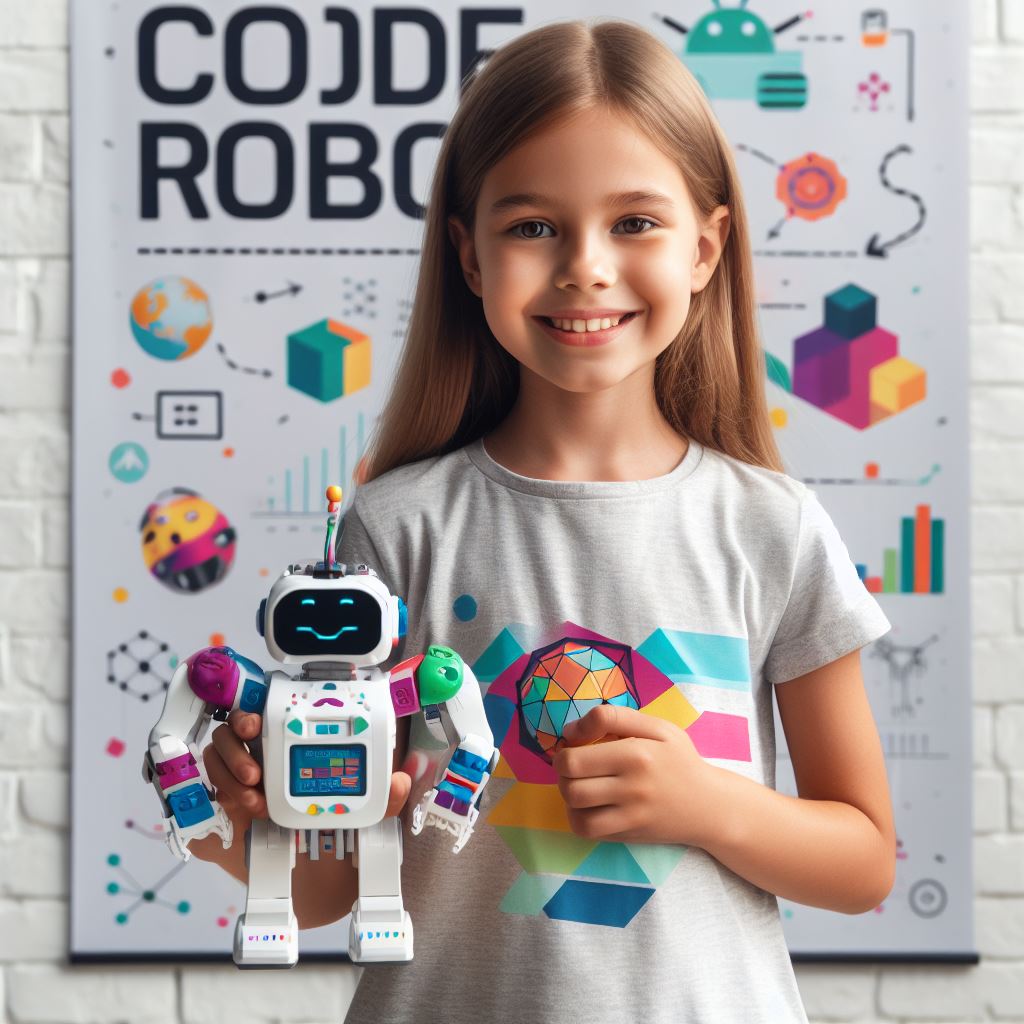Coding for Kids: Organizations that makes Coding Child’s Play
Last Updated on September 29, 2023
Introduction
Let’s delve into coding for kids organizations.
Coding for kids is the process of teaching programming skills to children at an early age.
Teaching programming to children is important as it enhances problem-solving skills and boosts creativity.
Various organizations are working tirelessly to make coding more accessible for kids, such as Code.org and Scratch.
Benefits of Coding for Kids
Coding for kids offers numerous benefits, delivering a well-rounded skill set that can be beneficial in various aspects of their lives.
Here are four key benefits of coding:
A. Enhances problem-solving and critical thinking skills
One of the significant benefits of coding for kids is the development of problem-solving and critical thinking skills.
Coding involves breaking down complex problems into smaller and more manageable parts.
Children learn how to approach problems systematically and logically, identifying potential solutions and evaluating their effectiveness.
This process enhances their ability to think critically and solve problems efficiently, an essential skill in any field.
Furthermore, coding teaches kids how to debug and troubleshoot errors.
When writing code, mistakes can occur, and children must use their problem-solving skills to identify and fix these bugs.
This process strengthens their ability to analyze situations and find solutions, boosting their overall problem-solving skills.
B. Fosters creativity and innovation
Coding provides a platform for children to unleash their creativity and foster innovation. When coding, kids have the freedom to experiment with different ideas and approaches.
They can create unique programs, games, or websites, allowing their imagination to soar.
This freedom to create encourages children to think outside the box, explore new possibilities, and come up with innovative solutions to problems.
Additionally, coding allows kids to express their creativity in a tangible manner.
They can visually design websites and applications, choose colors and layouts, and shape their creations to reflect their individuality.
This process empowers children to see the results of their imagination and instills confidence in their ability to create something from scratch.
C. Develops logical reasoning and analytical skills
Coding helps children develop logical reasoning and analytical skills by requiring them to think systematically, make connections, and identify patterns.
When coding, kids must break down complex tasks into smaller steps, ensuring each step builds upon the previous one.
This logical approach to problem-solving hones their ability to analyze situations and apply critical thinking.
Moreover, coding involves debugging and error handling. Children need to identify errors in their code and trace them back to their source.
This process enhances their analytical skills as they think through the possible causes of errors, systematically test and eliminate potential issues, and arrive at the correct solution.
D. Encourages perseverance and resilience
One of the valuable life skills coding instills in kids is perseverance and resilience. Coding is a trial-and-error process, and errors are to be expected.
When children encounter bugs or their code doesn’t work as expected, they must keep trying, find alternative solutions, and learn from their mistakes.
This persistence teaches kids the importance of not giving up when faced with challenges.
By overcoming obstacles and persisting through setbacks, children develop resilience.
They learn that failure is a natural part of the learning process and should not discourage them from pursuing their goals.
This resilience cultivated through coding carries over to other areas of their lives, helping them overcome challenges with confidence and determination.
In short, coding for kids offers a multitude of benefits, including enhanced problem-solving, critical thinking, creativity, logical reasoning, analytical skills, perseverance, and resilience.
It equips children with valuable skills applicable to various domains and prepares them for the digital era.
Read: Common Pitfalls to Avoid in JavaScript Coding Tests
Challenges in Teaching Coding to Kids
A. Language and complexity barriers
- Coding languages can be intimidating, especially for younger children.
- Simplifying coding syntax is crucial to making it accessible.
- Balancing simplicity with depth is a constant challenge.
B. Lack of available resources
- Insufficient access to computers and software hampers learning.
- Funding and infrastructure gaps hinder equitable coding education.
- Creative solutions, like low-cost coding kits, are emerging.
C. Stereotypes and gender biases
- Preconceived notions about coding being “for boys” discourage girls.
- Promoting diversity and inclusion is essential for breaking these biases.
- Highlighting successful female coders can inspire girls.
D. Teaching methods and curriculum design
- Traditional teaching methods may not engage kids effectively.
- Developing interactive and age-appropriate curricula is a challenge.
- Educators must continuously adapt to evolving teaching techniques.
Teaching coding to kids has its hurdles, but innovative approaches and determination can make it child’s play.
Read: Comparison: Freelance vs. Full-Time Coding Salaries

Organizations Making Programming Child’s Play
A. Scratch
Scratch is a popular platform that introduces kids to coding in a fun and interactive way.
With its block-based programming language, kids can create animations, games, and stories by dragging and dropping code blocks.
The platform offers a range of features and functionalities that enable young coders to explore their creativity and problem-solving skills.
One of the key strengths of Scratch is its user-friendly interface, which has been specifically designed to cater to the needs of children.
The colorful and intuitive interface makes it easy for kids to navigate and understand the programming concepts.
It also provides a supportive community where kids can share their projects, get feedback, and learn from others.
B. Code.org
Code.org is on a mission to bring computer science education to every student, especially those from underrepresented communities.
They organize the Hour of Code campaign, a global initiative that introduces millions of students to coding through one-hour coding tutorials.
These tutorials, featuring popular characters like Elsa from Frozen or Minecraft, make coding accessible and enjoyable for kids.
Code.org provides a wide range of online tutorials and resources for teachers and students.
Their curriculum covers various programming languages and concepts, allowing learners to progress from block-based coding to text-based programming.
The platform also offers professional development opportunities for educators to enhance their coding instruction skills.
C. Tynker
Tynker is an interactive learning platform that teaches kids coding through game-based courses.
With Tynker, children can learn to code by building their own games, apps, and interactive projects.
The platform uses a visual programming interface that simplifies the coding process, making it accessible and engaging for young learners.
Tynker’s game-based approach motivates kids to solve coding challenges and explore different programming concepts.
The platform offers a curriculum designed for schools, as well as resources for homeschooling parents.
Tynker also provides tools for educators to track their students’ progress and customize the learning experience to suit individual needs.
D. Raspberry Pi Foundation
The Raspberry Pi Foundation aims to promote the study of computer science and electronics by providing accessible hardware and educational resources.
The foundation’s flagship product, the Raspberry Pi, is a credit-card-sized computer that can be used for programming projects.
The Raspberry Pi Foundation offers educational initiatives and resources to support kids in learning coding and electronics.
Their projects range from beginner-friendly tutorials to advanced hands-on activities.
By encouraging kids to experiment and build their own projects, the foundation fosters a creative and practical approach to coding.
In fact, various organizations, such as Scratch, Code.org, Tynker, and the Raspberry Pi Foundation, are making programming child’s play by providing user-friendly platforms, interactive courses, and educational resources.
These initiatives aim to inspire and empower the next generation of young coders, equipping them with important skills for the digital age.
Read: Coding Test Best Practices for Employers: What to Know
Success Stories of Kids in Coding Organization
A. Real-life examples of kids achieving milestones in coding
- Emma, a 10-year-old, developed a game and launched it on an app store.
- Jason, at the age of 12, created a website that provided coding tutorials for beginners.
- Sarah, a 14-year-old, developed a mobile app to help students with math problems.
- Sam, at the age of 11, created a program that automated household chores for his family.
- Liam, a 9-year-old, built a robot using coding skills and won a science fair competition.
These real-life examples demonstrate the incredible achievements that kids can reach through coding.
It’s truly inspiring to see young minds creating innovative solutions and making a difference in their communities.
B. The impact of coding on their lives
- Coding has empowered these kids, giving them a sense of confidence and accomplishment.
- It has unlocked their creativity and problem-solving skills, enabling them to think critically.
- By learning coding, kids have gained a valuable understanding of technology and its applications.
- They have developed perseverance and patience while debugging and refining their code.
- Coding has also sparked an interest in STEM fields, leading to future career opportunities.
Coding equips kids with vital skills, shaping their personal and educational journeys profoundly. Organizations transform lives by making coding accessible.
They offer structured learning environments where creativity thrives. Early exposure to coding fosters opportunities and prepares children for the digital future.
Regardless of background, kids excel in coding with the right resources, promoting diversity and equal opportunities.
Kids’ success stories in coding unveil young learners’ limitless potential, fostering technology passion.
Supporting accessible, engaging programming for children ensures a brighter future for innovators.
Read: Top 5 Programming Languages with the Highest Salaries
Strategies to Make Coding More Accessible for Kids
A. Training and support for educators
Educators play a crucial role in introducing coding to kids and fostering their interest in programming.
To make coding more accessible, organizations need to provide comprehensive training and ongoing support for teachers.
This ensures that educators have the necessary skills and knowledge to effectively teach coding to kids.
B. Collaboration with schools and educational institutions
To reach a larger number of kids, organizations should collaborate with schools and educational institutions.
By partnering with these institutions, coding programs can be integrated into the mainstream curriculum, making it easily accessible to all students.
This collaboration also allows for the sharing of resources and expertise.
C. Addressing diversity and inclusion in coding programs
Organizations should actively address diversity and inclusion in coding programs.
This can involve providing scholarships or financial assistance to underprivileged students, creating programs specifically designed for girls or minority groups, and promoting a welcoming and inclusive environment.
By doing so, coding becomes accessible to a wider range of children.
D. Establishing coding clubs and community-driven initiatives
Coding clubs and community-driven initiatives are effective ways to make coding more accessible.
These clubs provide a supportive and collaborative environment for kids to learn and practice coding.
They also encourage peer learning and can act as a platform for showcasing projects and exchanging ideas.
By establishing such clubs in schools and communities, coding becomes more accessible outside of the traditional classroom setting.
Read: LeetCode vs. HackerRank: Best for Coding Test Prep
Conclusion
A. Significance of Coding for Kids
Coding is a crucial skill for kids, fostering creativity, problem-solving, and logical thinking.
B. Appreciating Organizations
Kudos to organizations like Code.org, Scratch, and Khan Academy for simplifying coding and making it fun.
C. Encouragement for Parents and Educators
Parents and educators, seize the opportunity to introduce coding early, nurturing future-ready skills in children.
D. Coding for All
Remember, coding isn’t just for tech enthusiasts; it’s a joyful and valuable journey for all kids, irrespective of their interests.


